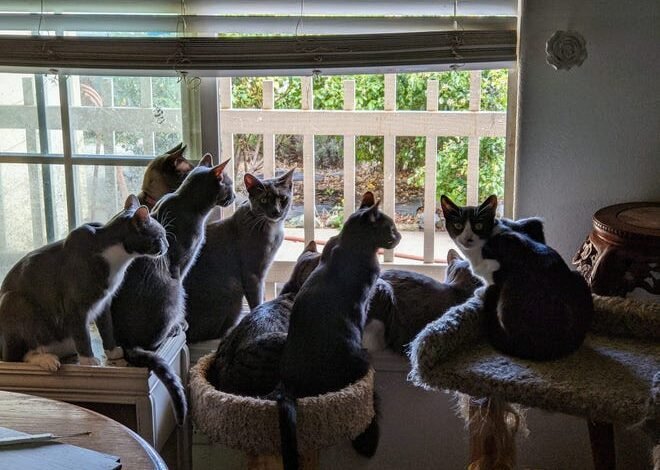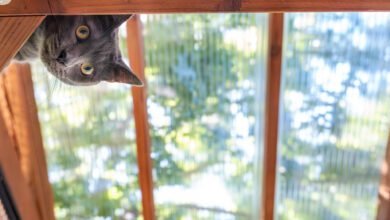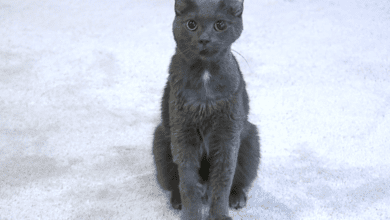Shasta Animal Shelters and Rescue Programs Filled with Dogs and Cats

Animal shelters and rescue centers are facing difficult decisions about what to do with a flood of dogs and cats in need of medical help and permanent homes.
Rising costs for veterinary supplies, overbreeding, long waits for veterinary appointments, rental units that don’t allow pets, and fewer younger veterinarians to replace retiring professionals have led to more people dropping off their furry friends at the Haven Humane Society and at other shelters, animal advocates said. .
Now, rescuers say their shelters are at or above capacity, leaving no room for more.
With 28 cats and eight dogs, even animal advocate Karen Hansen’s Cottonwood home is full, she said. Hansen runs the North State pet rescue nonprofit Catz and Dogz from her home.

People giving up their pets was so common in 2023 and so far in 2024 that Hansen had to say “no” to most of the people who called to get her to take in their animals. It was a matter of preserving her own health, she said.
At one point last year, “I had another 20 dogs and 40 cats” and she was working from 6 a.m. to midnight taking care of them. “I was crying because I was so tired,” Hansen said.
Now, she keeps her rescue at full capacity. But it’s hard to say no.
Difficult to keep animals away
Hansen said she had to comfort a fellow animal rescuer who had to terminate her pregnancy with a four-month-old kitten. The birth could have killed the mother and created eight more kittens to care for and then try to place in a permanent environment.
“The rescued people don’t want to terminate their pregnancies,” Hansen said, but they also can’t find homes for a dozen newborns. Therefore, some sick cats who are pregnant have abortions, sometimes to keep the mother alive.
It’s not just a problem in the north of the state.
Crowded animal shelters and rescues are a dilemma across California, including at Haven Humane Society in Anderson. That center is full, according to Haven CEO Mark Storrey.
Los Angeles and Bay Area shelters have reported similar difficulties throughout 2023, according to shelter websites and stories in the Los Angeles Times and SFGATE.com. Approximately 390,000 dogs and 530,000 cats are euthanized annually nationwide, according to the ASPCA.
But California’s urban areas generally have more spay and neuter options and more veterinary services in general, while urban residents also tend to have more money to pay for that care, Hansen said. Rural areas like Shasta and Tehama counties often have more colonies of stray cats and more neglected or abandoned dogs than urban communities.
Note to readers: If you appreciate the work we do here at Redding Record Searchlight,please consider subscribing yourself or give a subscription as a gift to someone you know.
‘Euthanasia is always our last choice’
In 14 years, Storrey said he has never seen Haven as busy as it was from 2023 to 2024.
Haven has had to turn away some people who want to spay or neuter their pets because the shelter’s two full-time veterinarians and one part-time veterinarian are busy trying to care for the animals already at Haven’s adoption center, wild animals brought into for medical care and homeless cats that are trapped, “fixed” and released, he said.
“We did just under 3,000 spays/neuters in 2023,” he said, with 1,123 of the sterilization procedures being performed on stray cats. pets and animals at the Haven adoption center, Storrey said.
Having so many stray animals in need of health care and adoption harms both the pets and the people who care for them, Storrey and Hansen said.
“We will always try to be a no-kill facility,” Storrey said, referring to an industry term to describe shelters with a 90 percent release rate of live animals, with the remainder of animals being euthanized or dying. shelter from existing illnesses or injuries.
“We were like this with the dogs for seven years,” until 2023, Storrey said. “Unfortunately, over the last 12 to 15 months, we have been inundated with animals,” he said.
‘Flooded with animals’
Reasons for the increase include intentional overbreeding of animals and people not spaying or neutering their pets, in part due to rising veterinary costs. Pet owners may have to wait weeks or longer to get a veterinary appointment. It’s also difficult for pet owners to find homes to rent that allow dogs or cats, according to Storrey.
As of 2023, Haven has cared for 4,746 animals. Nearly 40%, or 1,885 individuals, were pets that Haven adopted. The remainder were animals that arrived dead or dying, pets later reunited with their owners, wild animals later released into their territories, and client pets – along with 1,123 outdoor stray cats – that were brought in for spay or neuter services or sterilization, according to Storrey.
He said the center performed just under 3,000 spay and neuter surgeries on dogs and cats last year.
“Euthanasia is always our last choice,” Storrey said.
There was some good news.
More people are adopting Haven’s dogs and cats this month than usual, Storrey said, thanks in part to Haven’s waiving of pet adoption fees through May 15.
For more information, call Haven Humane Society at 530-241-1653, or Catz and Dogz of North State at 530-527-9369.
Jessica Skropanic is a reporter for the Record Searchlight/USA Today Network. She covers science, arts, social issues and news. Follow her on Twitter@RS_JSkropanic and so onFacebook. Join Jessica on To go out! Not Cal recreation group on Facebook. To support and sustain this work,please subscribe today. Thanks.




